Science & Technology
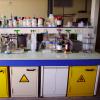 CU Boulder researcher Aaron Clauset examines the possibilities and limits of using massive data sets of scientific papers and information on scientific careers to study the social processes that underlie discoveries.
CU Boulder researcher Aaron Clauset examines the possibilities and limits of using massive data sets of scientific papers and information on scientific careers to study the social processes that underlie discoveries. New evidence indicates that humans were the primary cause of the Australian megafauna extinction around 45,000 years ago.
New evidence indicates that humans were the primary cause of the Australian megafauna extinction around 45,000 years ago. Bolstering their 60-year relationship, Ball Aerospace and CU Boulder this week announced a new agreement designed to make it easier for students and faculty to collaborate on research projects with Ball scientists.
Bolstering their 60-year relationship, Ball Aerospace and CU Boulder this week announced a new agreement designed to make it easier for students and faculty to collaborate on research projects with Ball scientists. Neanderthals get a bad rap. CU archaeologist Paola Villa is helping set the record straight, suggesting Neanderthals were far more nimble intellectually than they get credit for.
Neanderthals get a bad rap. CU archaeologist Paola Villa is helping set the record straight, suggesting Neanderthals were far more nimble intellectually than they get credit for.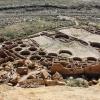 The ancient Puebloan people, numbered in the thousands, could not have grown enough food where they lived in New Mexico, likely forcing them to import their sustenance, a CU Boulder scientist has discovered.
The ancient Puebloan people, numbered in the thousands, could not have grown enough food where they lived in New Mexico, likely forcing them to import their sustenance, a CU Boulder scientist has discovered.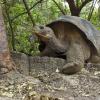 A new study pinpoints when the Galápagos Islands developed their unique ecology.
A new study pinpoints when the Galápagos Islands developed their unique ecology.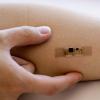 Researchers from the University of Colorado Boulder and Northwestern University have developed a tiny, soft and wearable acoustic sensor that measures vibrations in the human body, allowing them to monitor human heart health and recognize spoken words.
Researchers from the University of Colorado Boulder and Northwestern University have developed a tiny, soft and wearable acoustic sensor that measures vibrations in the human body, allowing them to monitor human heart health and recognize spoken words.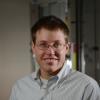 Assistant Professor of Physics Loren Hough has earned a $1.8 million award from the National Institute of General Medical Science to study tubulin, a shape-shifting cellular protein that is quietly essential to many life processes.
Assistant Professor of Physics Loren Hough has earned a $1.8 million award from the National Institute of General Medical Science to study tubulin, a shape-shifting cellular protein that is quietly essential to many life processes.
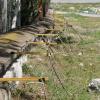 A new CIRES study shows how incremental activity along Turkey's North Anatolia fault may provide insight into future seismic events.
A new CIRES study shows how incremental activity along Turkey's North Anatolia fault may provide insight into future seismic events.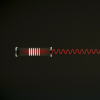 JILA physicists have demonstrated a novel laser design that could be stable enough to improve atomic clock performance a hundredfold and even serve as a clock itself, while also advancing other scientific quests such as making accurate “rulers” for measuring astronomical distances.
JILA physicists have demonstrated a novel laser design that could be stable enough to improve atomic clock performance a hundredfold and even serve as a clock itself, while also advancing other scientific quests such as making accurate “rulers” for measuring astronomical distances.


